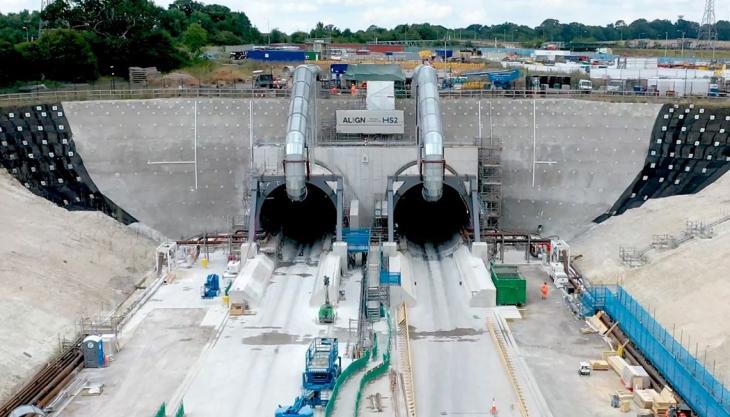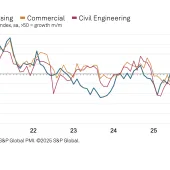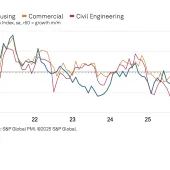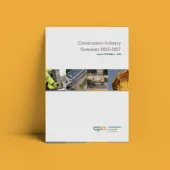Strong construction output growth in 2021

But supply chain constraints expected to hinder growth over remainder of year and into 2022
THE Construction Products Association (CPA) has revised construction output growth up for 2021 from 13.7% to 14.3% since its previous forecasts, but also revised growth down from 6.3% to 4.8% in 2022. With more buoyant demand so far in 2021, supply chain constraints are expected to hinder growth over the remainder of the year and into 2022.
There is real doubt as to whether there is sufficient capacity in the whole construction supply chain to meet demand. Skills shortages, product availability, cost inflation, HGV driver shortages, the impacts of energy cost rises, and delays at ports are all expected to make up an unprecedented number of constraints on growth for the months ahead.
The CPA’s Autumn Forecast shows the infrastructure sector to be the key driver of construction growth for the year ahead. Less affected by supply-side issues than other areas of construction, the main activity in the sector is due to work on five-year spending plans within the regulated sectors of rail, water, roads, and energy.
Growth above general activity levels will be driven by major projects such as the Thames Tideway Tunnel, Hinkley Point C and HS2, with infrastructure output forecast to rise by 23.9% in 2021 and by 9.7% in 2022 as the sector reaches record levels due to main works on HS2.
Output in private housing, the largest construction sector, is forecast to rise by 17.0% in 2021 and by 6.0% in 2022, with house builders confident regarding demand at the end of this year and in the first half of 2022. However, the private housing forecast for next year is a downward revision from 8.0% forecast in the Summer to reflect concerns about affordability and the sustainability of double-digit house price growth, particularly in the light of rising inflation concerns and the impact on consumer confidence and spending in the second half of 2022.
In the commercial sector, activity on the fit-out and finishing of new and existing offices, retail, and leisure buildings, plus changes in use of existing commercial developments into residential and warehouse space, remains strong. While demand for new, high-profile, grade-A office space appears to be robust as corporate clients move into new, quality office space aimed at fewer employees and increased space per worker, new investment is lacking in mid-range office space and in retail.
According to the CPA, relatively few new office tower projects remain in the pipeline owing to an excess supply of floor space in urban centres, given only a partial return to offices, whilst existing retail space demand remains lower than pre-COVID-19 despite retail sales having recovered to pre-pandemic levels, the issue here being the long-term shift away from in-store retail and towards online shopping, which has accelerated sharply due to the impacts of the lockdowns.
Commenting on the supply chain issues, CPA economics director Noble Francis said: ‘Demand continues to be remarkably strong across the construction industry, but supply issues are hindering growth and will continue to do so in the medium term.
‘The biggest impacts of the supply constraints are on the small construction firms. Large contractors and major house builders have a greater certainty of demand over the 12–18-month horizon and are better able to plan and purchase in advance as well as adjust to changing economic situations.’









